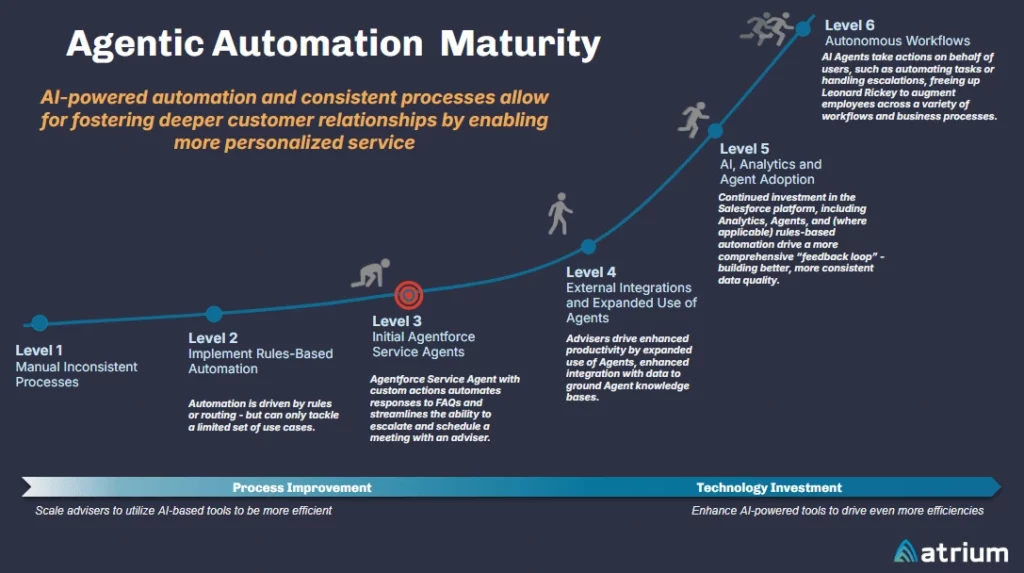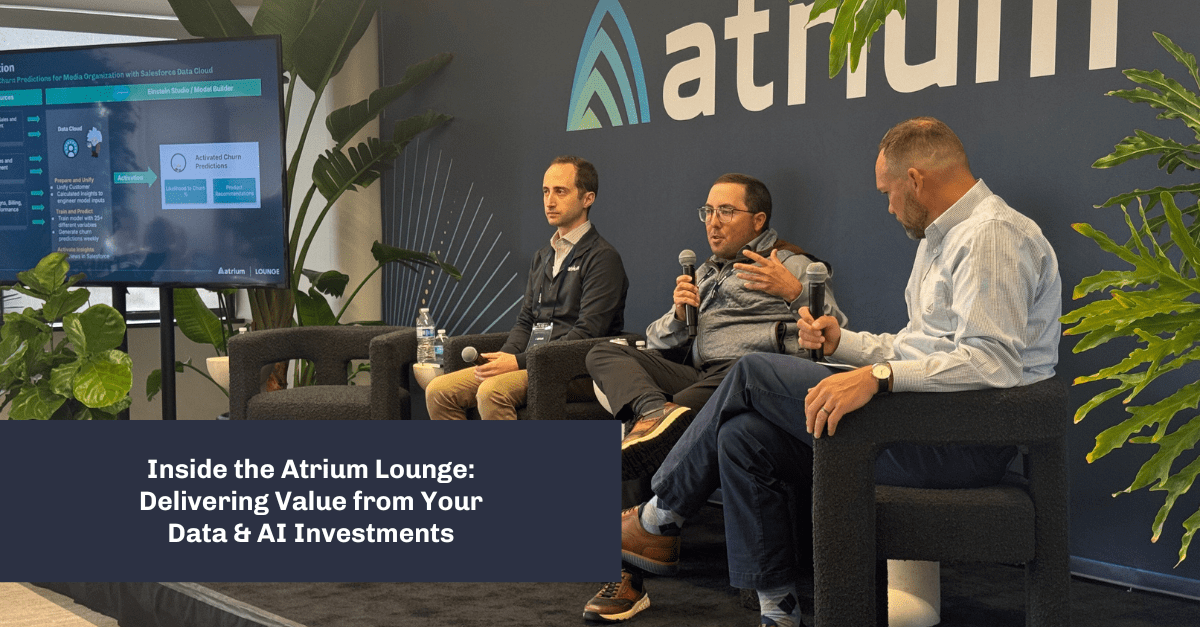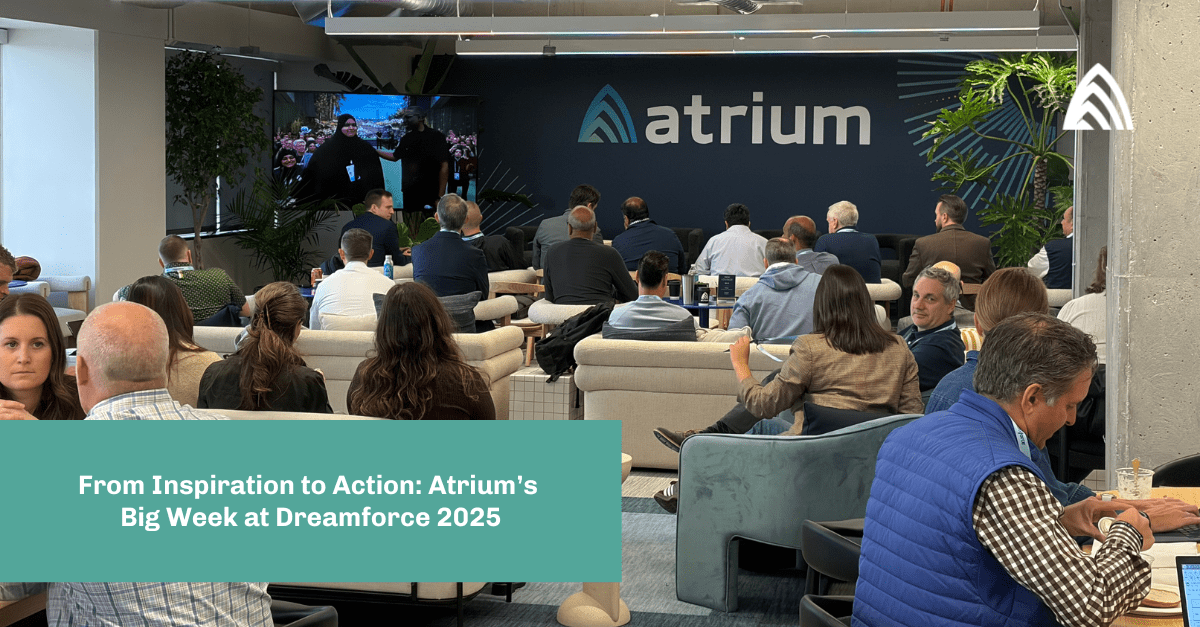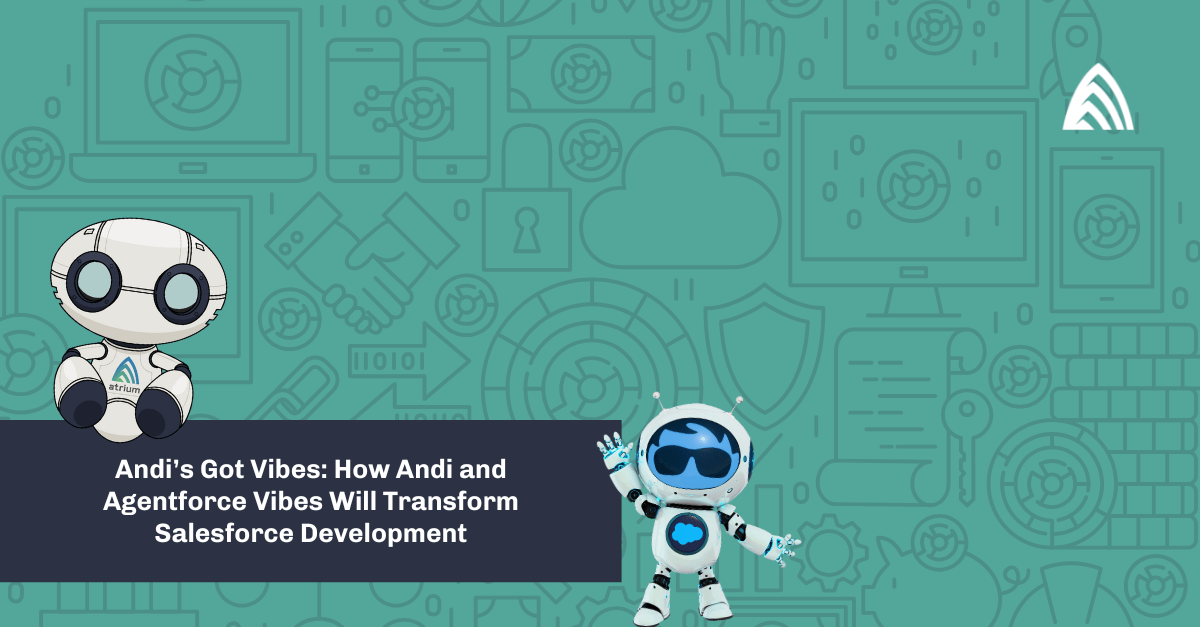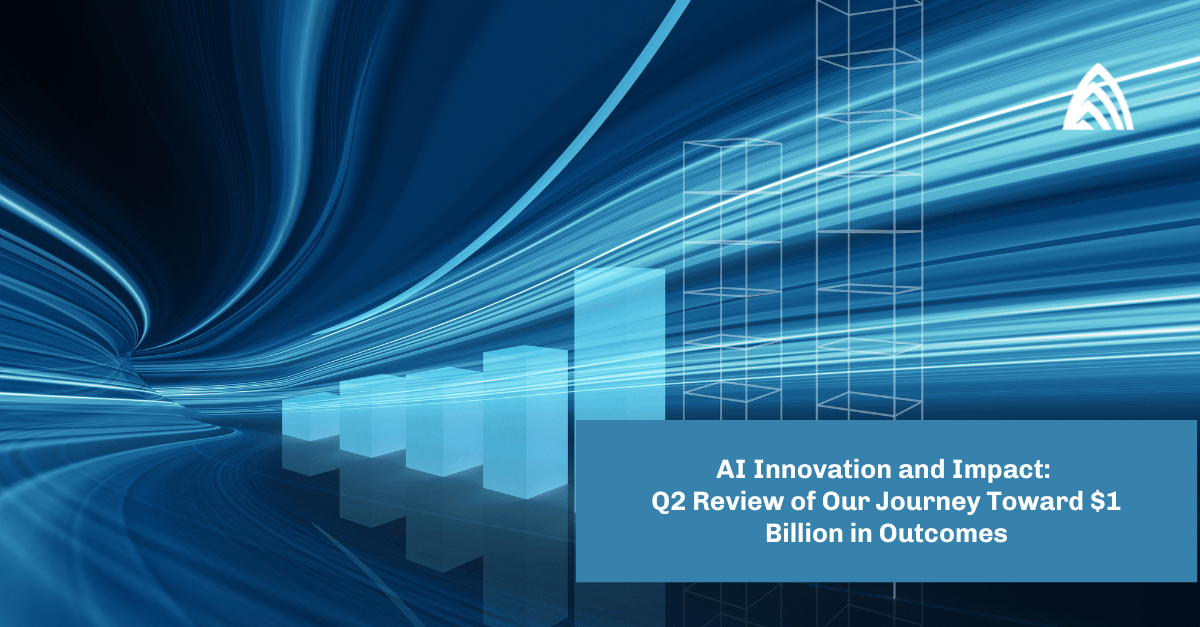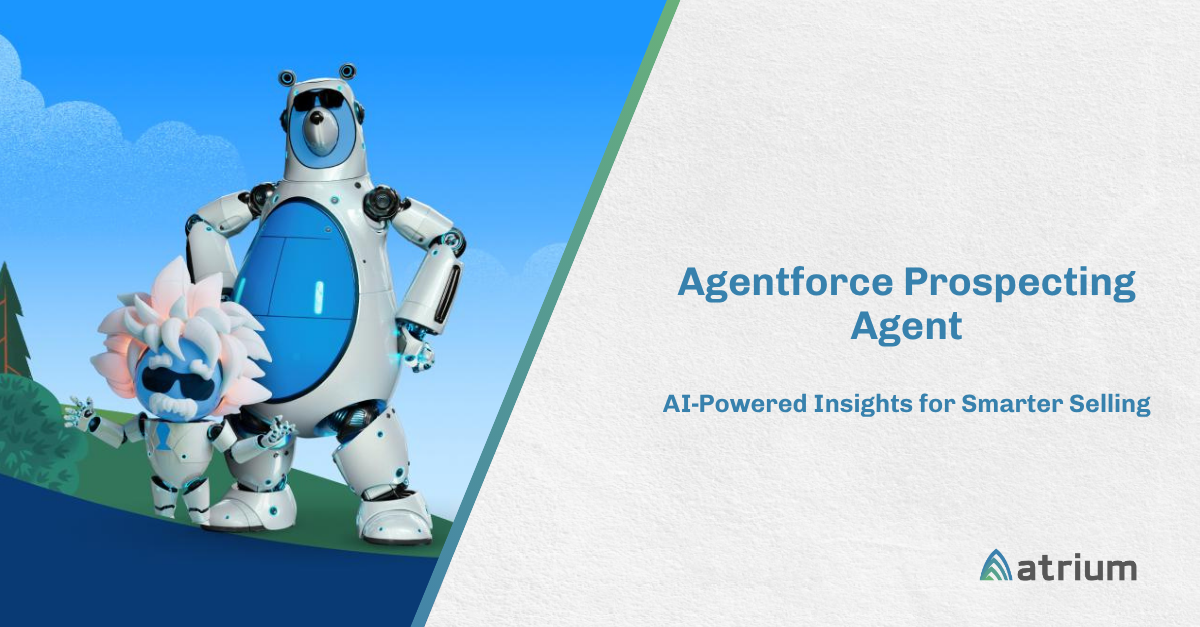Atrium is dedicated to delivering tangible business benefits for our customers. You’ve probably already seen our 1 Billion Dollar Outcomes Dashboard, which we’re using to track our journey to inventory 1 billion dollars in projected customer ROI by the end of the year.
This achievement highlights our commitment to driving AI-based value creation across a variety of industries, use cases, and technologies. As AI technologies like Salesforce Agentforce have evolved over the first quarter of the year, we’ve found that companies have been identifying and taking advantage of different revenue drivers.
In this blog, we’ll explore some of the current trends we’re observing in the market, focusing on the areas where our customers are currently experiencing the most substantial benefits and how Atrium is contributing to this success.
How we’re seeing Agentic AI drive ROI for our customers
As we’ve explored different implementations and uses of AI, we’re starting to see several key themes emerge. First, we’re seeing organizations think about Agentic AI maturity as they look beyond simple “proof-of-technology” type use cases to more complex problems. Salesforce, too, is ramping up a message oriented around a more mature agentic experience — rather than thinking about single use cases, they are starting to discuss a message that centers on role-based “digital labor” that ties AI into entire workstreams.
As such, organizations need to start thinking about the value of AI-based augmentation in multiple aspects of their business, not just isolated workstreams. Put more simply, if you want to drive meaningful value as an organization implementing AI, you need to answer the following question: How can we design business processes in tandem with AI capabilities?
Tracking customer acquisition and conversion gains
In Q1, we saw many organizations, particularly in financial services, focus on improving their customer acquisition processes. This took on several forms, but here are a few key examples:
- Lead and Opportunity scoring models to drive better prioritization of the prospects on which sellers focus
- Models combined with business rules/agentic processes to identify high-likelihood matches between lenders and customers seeking loans
- Enhanced operational efficiency based on automated model explanations that help sellers better understand key drivers of deal success and help new sellers ramp up quickly
When organizations are looking to get a sense for the ROI associated with use cases tied to customer acquisition, we typically ask the question: What does a 1% gain in conversion look like? In many cases, simply prioritizing working leads/opportunities can lead to much more sizable direct revenue gains than 1%, but even a small uptick in conversion can have massive implications at the enterprise.
Start factoring in the impacts of indirect revenue gains, such as increases in efficiency due to faster ramp-up times for sellers, or more consistency across sales teams, and it becomes clear that models and AI-based automation can drive significant benefits for companies looking to be more efficient.
Driving sales and service efficiency with agents
Many organizations are just getting started down the path of building an agent-based foundation, and proving the value of Agentic AI is a key first step.
We’ve been working with a number of customers to build FAQ service agents to save time for service personnel or wealth advisers. In one instance, an FAQ agent was able to save an investment advising firm more than 640 hours per year for a small team of advisers. With the time saved, they not only drove six-figure revenue gains but also enabled their advisers to deepen relationships with clients, tackle more complex issues, and focus on high-value activities.
Other organizations are focusing on more direct ways to leverage predictive AI to deepen customer relationships, primarily by powering data-driven cross-sell and upsell. By leveraging Salesforce Data Cloud’s predictive modeling tools to generate per-product propensities, organizations are building targeted recommendations to sellers looking to position products that are best fits for customers.
Guided cross-sell capabilities can make sellers more efficient by highlighting product insights and giving sellers visibility into the predicted likelihood of purchasing a given product or bundle, while also driving increased sales conversion, higher wallet share, and more comprehensive account penetration.
Driving higher ROI requires moving up the AI maturity curve
AI-based tools are still relatively new, and their capabilities and limitations are still changing rapidly. No doubt, the speed of innovation in this space is unprecedented, and implementing AI-based solutions can be daunting.
It may be easy for companies to shy away from investing in these new technologies, but by doing that, they are leaving clear opportunities for growth off the table. Companies that invest in a strong foundation in AI, focusing on use cases/roles that drive real, actionable business value are going to find themselves ahead of the curve.
Atrium has been driving AI-based value in CRM since 2017, and we can help you think through how to prioritize AI projects and implement AI tools that drive real ROI. We’ve already helped our customers identify more than $800M in potential value generated by AI Agents, predictive models, or other solutions, and we’d love to help you bring that value to your business.

